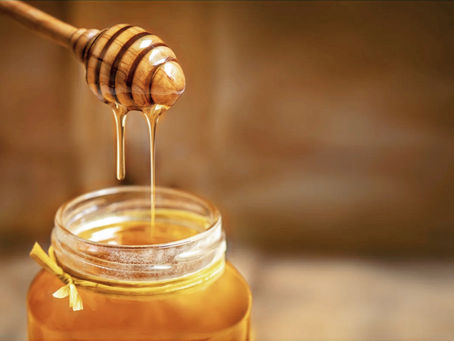top of page


The Art of Dehydration in Mixology: Techniques, Tools, and Flavor Transformation
Dehydration is one of the most practical and transformative techniques in modern mixology.Whether used for garnish aesthetics, shelf-stable infusions, or to concentrate the flavor of fruits and herbs, learning how to dehydrate ingredients correctly can elevate your cocktail presentation and deepen its aromatic complexity.


The Double Strainer | Year One: Mixology Techniques, Recipes & Bar Systems (Free)
I started The Double Strainer because too much know-how lives in back offices and paywalled PDFs. This project exists to keep the craft open, practical, and free — from milk washing to menu engineering — so you can bring clarity to prep, service, and training. Today’s post is both celebration and instruction: a precise recap of the year, the people who inspired us, and the practical guides, worksheets, and recipes you can put to work tonight.


Homemade Herbal Tonic Water: The Easy Upgrade for Sparkling Cocktails
This is a bright, green, garden-forward tonic built from tarragon, basil, and lemongrass—carbonated to service pressure in a siphon. It’s designed for speed (blend-strain-filter-charge), clarity (fine strain + coffee filter), and stability (cold extraction + low oxygen). Below you’ll find why it works, how to nail it every time, and how to use it across cocktails, low-ABV, and zero-proof serves.


Daiquiri: The Spirit of Cuba in a Glass
The Daiquiri is more than a cocktail — it’s the distilled essence of balance, the meeting point between sugar, citrus, and spirit.
Three simple ingredients — Cuban rum, fresh lime juice, and simple syrup — combine to create one of the world’s most elegant drinks.
Yet behind that simplicity lies a universe of technique, history, and cultural identity.


The Art and Science of Milk Punch (Milk Washing)
In the ever-evolving world of mixology, few techniques embody both historical tradition and modern innovation as elegantly as Milk Punch, often referred to as Milk Washing. At first glance, the idea of mixing milk with spirits might sound counterintuitive. Yet, when executed properly, it produces cocktails that are not only crystal-clear but also remarkably smooth, with a velvety mouthfeel and complex layers of flavor.


The Essential Guide to Bitters in Cocktails: A Comprehensive Exploration
Bitters are among the most indispensable yet often overlooked ingredients in the world of cocktails.


How to Clarify an Ingredient with Agar Agar
In the world of modern mixology, achieving crystal-clear flavors and pristine aesthetics is a high priority. Clarification is a technique th


The Art of Beer Cocktails: A Guide to Mixing Brews with Spirits
Beer is one of the oldest and most beloved alcoholic beverages in the world. But while most people enjoy it straight from the bottle or poured into a frosty pint glass, there’s an entire world of mixology waiting to be explored with beer as a key ingredient. From light and effervescent lagers to bold and complex stouts, beer brings depth, texture, and carbonation to cocktails in ways that traditional mixers simply can’t.


Honey: A Study of Flavor, Texture, and Terroir
In contemporary mixology, where ingredients are selected not merely for their sweetness but for their depth, provenance, and aromatic potential, honey has earned a place of prestige. Far beyond a simple sweetener, honey is a botanical expression of terroir, seasonality, and floral diversity. For the modern bartender, understanding the different types of honey and their sensory profiles is key to crafting thoughtful, balanced, and expressive cocktails.


Tinctures in Cocktails: The Art of Infusing Flavor and Aroma
In the world of mixology, innovation and experimentation often lead to exciting new flavors and techniques. One such technique that has gain


Optimizing Flavor Extraction in Cocktails Through Sous Vide
In the ever-evolving landscape of mixology, precision and innovation have become as essential as quality ingredients. One of the most exciti


Dry Ice & Bar Safety: Best Practices for Bartenders
Dry ice, the solid form of carbon dioxide (CO₂), has become a popular element in the world of mixology.


Sake: Styles and How to Use it in Cocktails
Sake, the iconic Japanese rice wine, has transcended its roots as a traditional beverage to become a key ingredient in modern mixology.


Ginger Ale Vs. Ginger Beer
When it comes to crafting cocktails, ginger-based mixers are some of the most versatile and flavorful ingredients a bartender can use.


Tuak: The Spirit of Borneo
Tuak, a traditional rice wine, holds a special place in the cultural tapestry of Malaysia, particularly among the indigenous communities of


The Milkshake Mixer
The milkshake mixer, often seen as a relic of 1950s diners, has found a new home behind the counters of today’s trendiest bars.


The Solera System: A Timeless Method of Aging
The Solera system is an innovative and intricate method of aging liquids, primarily associated with sherry, but also used for other fortified wines, rum, whiskey, balsamic vinegar, and even beer. This fractional blending system is revered for its ability to produce consistent, complex, and high-quality products by combining older and younger vintages. Here, we’ll delve into the origins, mechanics, and applications of the Solera system to better appreciate its enduring appeal.


A Comprehensive Guide to Oleo Saccharum
Oleo saccharum, a term that translates from Latin as "oil sugar", is a key ingredient in mixology that has roots in pre-Prohibition punch re


Understanding pH and Its Importance in Crafting Cocktails
When crafting the perfect cocktail, mixologists must balance various elements—sweetness, bitterness, strength, and acidity—to create a harmonious drink. One often-overlooked scientific aspect of cocktail creation is pH , a measure of the drink's acidity or alkalinity. Understanding and controlling pH can elevate cocktails to new levels of flavor, ensuring consistent quality and a balanced drinking experience. This article delves into what pH is, why it matters in cocktail-mak


The Rapid Infusion Technique: Revolutionizing Mixology with a Cream Whipper
In the ever-evolving world of mixology, innovative techniques continue to push the boundaries of creativity, offering bartenders new ways to craft unique and memorable drinks. One such groundbreaking method is the rapid infusion technique , which utilizes a siphon—commonly known as a cream whipper. This method enables bartenders to quickly infuse spirits, syrups, or cocktails with flavors that would traditionally require hours or days to develop. Here’s a deep dive into this
bottom of page



